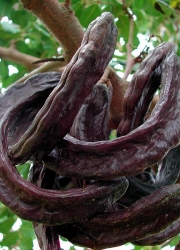Chalitzia


Figs
The dried figs of Tylliria are figs smoked with sulfur and dried under the sun.
They are small in size, white and soft with a sweet taste and they are produced during the summer months, between July and September.
The figs have been named after the area where they are produced.
Production method:
A local variety of figs which is called “koutsino” and found in Tylliria is used for their production.
The figs are allowed to mature before being collected and placed in specially configured rooms or containers (kilns) to be smoked. The smoking procedure involves lighting sulfur and allowing it to smoke the figs for about 24 hours. Next, the smoked figs are left to dry under the sun for 7-10 days before being placed in boiled water to wash. Finally, they are allowed to dry before packaging.
No historical sources regarding the figs have so far been traced. According to local producers, the knowhow related to the production of these dried figs has been passed down from generation to generation.
According to Th. Kyprianou (2000), the figs of the “koutsina” variety are mainly cultivated in Tylliria and are considered to be some of the best figs, which are also used for the production of the Dried Figs of Tylliria.


Carobs




Prickly pears
The Prickly Pear is one of the most delicious summer fruits. It can also satisfy one’s thirst since is contains high levels of water (87.5%). The International Journal of Food Science and Nutrition remarks that the Prickly Pear is a good source of inorganic substances such as calcium, potassium, magnesium and phosphorus. The prickly pear’s seed contains linoleic acid, which is, in essence, a fatty acid bringing numerous benefits for people’s health. The great nutritional and medicinal value of the prickly pear is attributed to it being rich in magnesium and amino acid taurine, substances which are crucial for the health of the brain and the heart, while it is also rich in flavonoid antioxidant substances which act against cancer and heart diseases. Prickly pears contain powerful antioxidants and protect various tissues and organs, nerves, the eyes and joints.
















